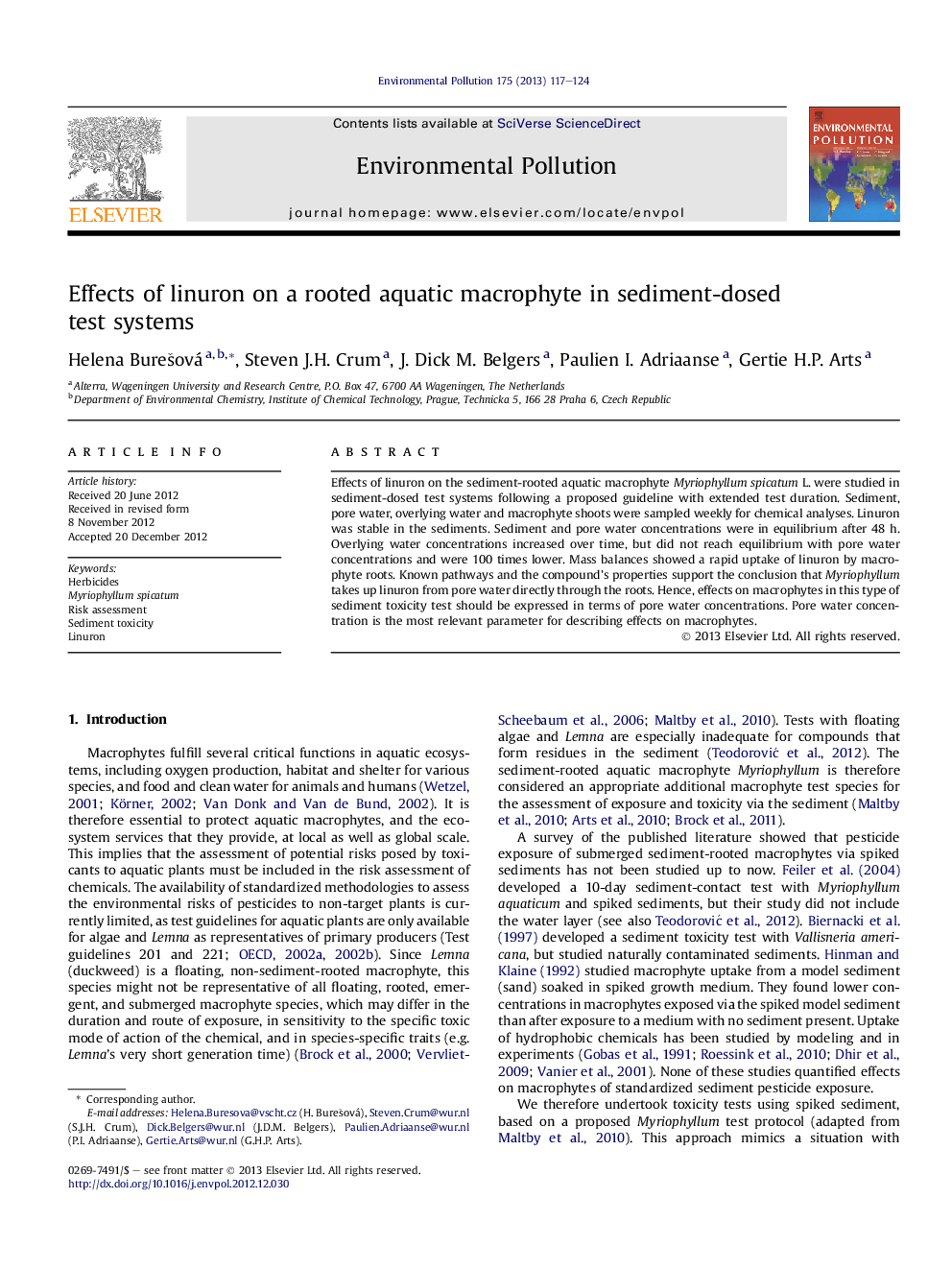| Article ID | Journal | Published Year | Pages | File Type |
|---|---|---|---|---|
| 4424592 | Environmental Pollution | 2013 | 8 Pages |
Effects of linuron on the sediment-rooted aquatic macrophyte Myriophyllum spicatum L. were studied in sediment-dosed test systems following a proposed guideline with extended test duration. Sediment, pore water, overlying water and macrophyte shoots were sampled weekly for chemical analyses. Linuron was stable in the sediments. Sediment and pore water concentrations were in equilibrium after 48 h. Overlying water concentrations increased over time, but did not reach equilibrium with pore water concentrations and were 100 times lower. Mass balances showed a rapid uptake of linuron by macrophyte roots. Known pathways and the compound's properties support the conclusion that Myriophyllum takes up linuron from pore water directly through the roots. Hence, effects on macrophytes in this type of sediment toxicity test should be expressed in terms of pore water concentrations. Pore water concentration is the most relevant parameter for describing effects on macrophytes.
► First sediment-spiked pesticide toxicity test with a rooted macrophyte. ► Mass balances show rapid uptake of linuron by macrophyte roots. ► Pore water concentration is the most relevant parameter for macrophyte effects. ► Sediment exposure results in smaller effects on Myriophyllum than water exposure.
